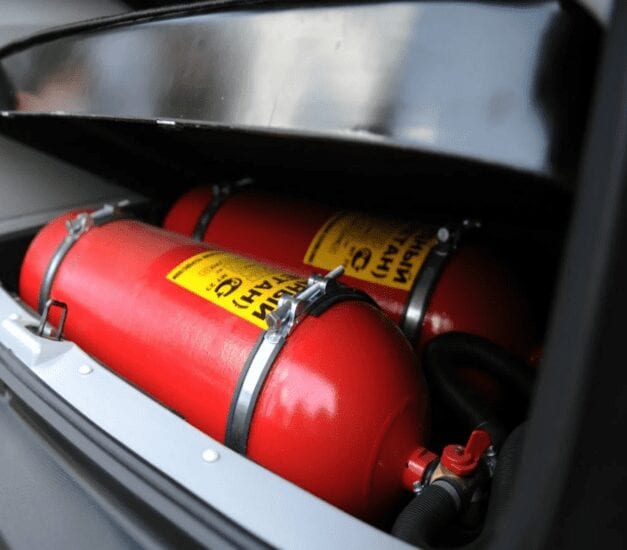
Gas balloon equipment
Content
Installation of gas-balloon equipment has been a necessary procedure for the last few years. The trend of constantly rising gasoline prices has made motorists think about alternative fuels. In this article, we will consider all generations of gas-balloon equipment, how they differ from each other, and whether the car can work stably on alternative fuels.
What is HBO
LPG equipment is installed in most passenger cars as an additional system that provides the internal combustion engine with an alternative fuel. The most common gas is a mixture of propane and butane. Methane is used in large-sized vehicles, since the system requires much higher pressure than its analogue on propane (large cylinders with thick walls are required).
In addition to light vehicles, LPG is also used on some models of crossovers or small trucks, for example, the Ford F150. There are manufacturers who equip some models with gas installations directly at the factory.

Most motorists convert their cars to a combined fuel system. The operation of the engine on gas and gasoline is almost identical, which makes it possible to use both types of fuel in many gasoline power units.
Why install HBO
The reason for installing HBO may be the following factors:
- Fuel cost. Gasoline at most filling stations is sold twice as expensive as gas, although the consumption of both fuels is practically the same (gas is about 15% more);
- The octane number of gas (propane-butane) is higher than that of gasoline, so the engine runs smoother, no detonation occurs in it;
- The combustion of liquefied gas occurs more efficiently due to its structure - for the same effect, gasoline must be sprayed so that it mixes better with air;
- If one of the fuel supply systems fails, you can use the other as a backup. Most often, this option comes in handy when the gas in the cylinder runs out, and it is still very far to refuel. True, in this case it is important that the gas tank is also filled;
- If the car is equipped with LPG equipment higher than the 2nd generation, then the control unit switches the fuel system automatically from gas to gasoline, which increases the distance without refueling (although this will affect the total cost of fuel);
- When gas burns, less pollutants are released into the atmosphere.

In most cases, HBO is installed for economic reasons, and not for other reasons. Although there are much more technical advantages in this. So, switching from gas to gasoline and vice versa allows you to prepare the engine for work in the cold - to warm it up smoothly. It is more difficult to do this with gas, since its temperature is 40 degrees below zero. In order to adapt the alternative fuel for better combustion in the cylinder, it must be slightly warmed up.
For this purpose, a branch pipe of the engine cooling system is connected to the reducer of the gas installation. When the antifreeze in it warms up, the temperature of the cold gas in the reducer rises slightly, which makes it easier to ignite in the engine.
If the car passes environmental certification, then the test on internal combustion engine gas will pass without problems. But with a gasoline unit without catalyst and high-octane gasoline, this is difficult to achieve.
Generational classification of HBO
Gas equipment is constantly updated following the modernization of cars and the tightening of exhaust standards. There are 6 generations, but only 3 of them are fundamentally different from each other, the remaining 3 generations are intermediate.
1st generation
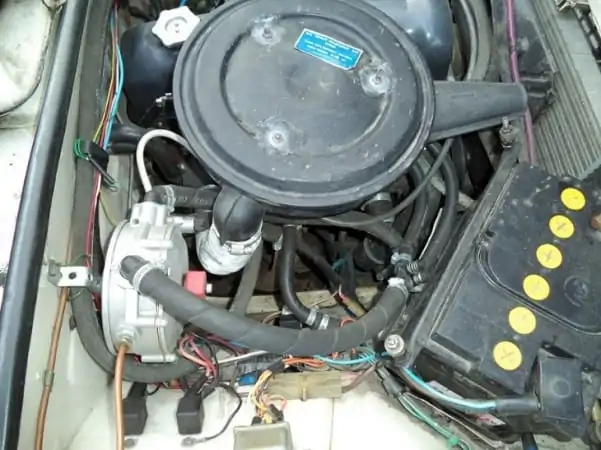
The first generation uses propane-butane or methane. The main components of the equipment are a cylinder and an evaporator. The gas is filled through the valves into the cylinder, then enters the evaporator, where it passes into a vapor state (and the methane warms up), after which the gas passes through a reducer, which doses the injection depending on the pressure in the intake manifold.
In the first generation, separate blocks of the evaporator and reducer were initially used, later the nodes were combined into one housing.
The first-generation gearbox operates by vacuum in the intake manifold, where when the intake valve is opened, gas is sucked into the cylinder through a carburetor or mixer.
The first generation has its drawbacks: frequent depressurization of the system, leading to pops and fire, difficult engine start, frequent adjustment of the mixture is required.
2st generation
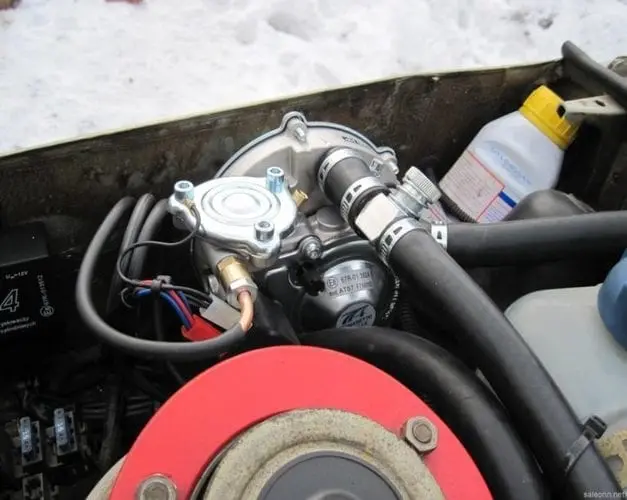
The second generation was slightly modernized. The main difference between the first is the presence of a solenoid valve instead of a vacuum one. Now you can switch between gasoline and gas without leaving the cabin, it became possible to start the engine on gas. But the main difference is that it became possible to install the 2nd generation on injection cars with distributed injection.
3st generation
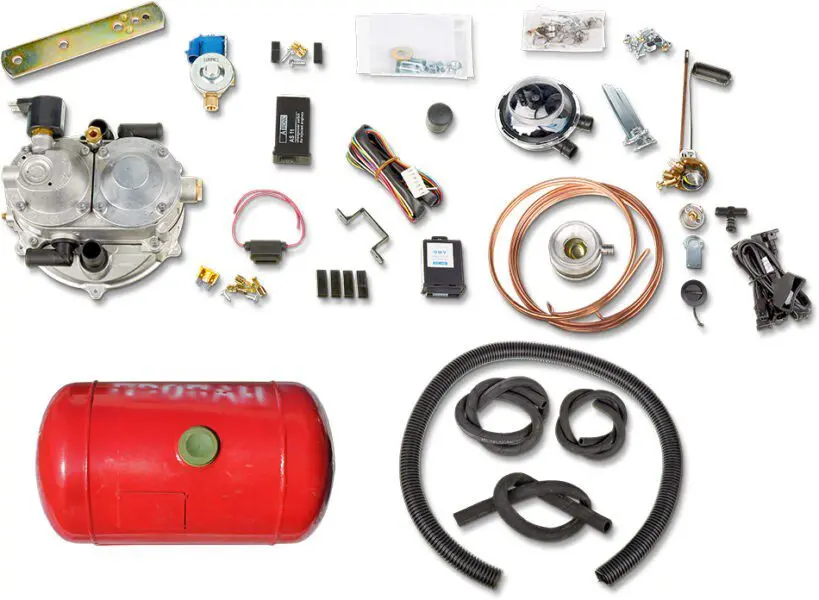
Another modernization of the first generation, reminiscent of a monoinjector. The gearbox was equipped with an automatic gas flow corrector, which takes information from the oxygen sensor, and controls the amount of gas through the stepper motor. A temperature sensor also appeared, which does not allow switching to gas until the engine warms up.
Thanks to the reading of the oxygen sensor, HBO-3 meets the requirements of Euro-2, therefore it is installed only on the injector. At present, third-generation kits are rarely found on offer markets.
4st generation
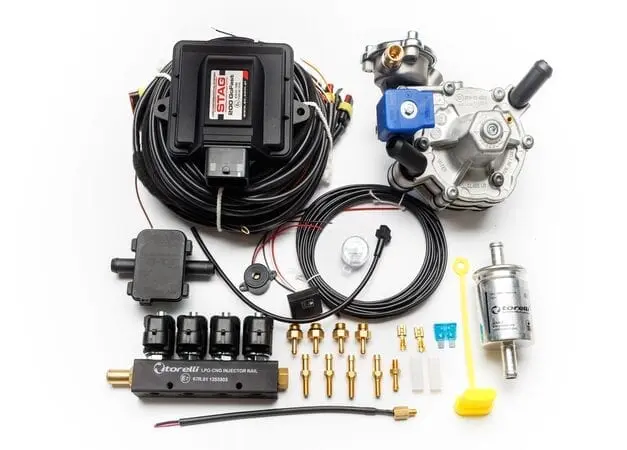
A fundamentally new system, which is most often installed on injection cars with distributed direct injection.
The principle of operation is that the gas reducer has a constant pressure, and now the gas enters through the nozzles (each per cylinder) into the intake manifold. The equipment is equipped with a control unit that regulates the moment of injection, as well as the amount of gas. The system works automatically: upon reaching the operating temperature of the engine, gas enters the work, but there is the possibility of forced gas supply by a button from the passenger compartment.
HBO-4 is convenient in that the diagnostics and adjustment of the gearbox and nozzles are carried out programmatically, and wide possibilities for wide-range settings are opened.
Methane equipment has the same design, only with reinforced components due to pressure differences (methane has a pressure 10 times higher than propane).
5st generation
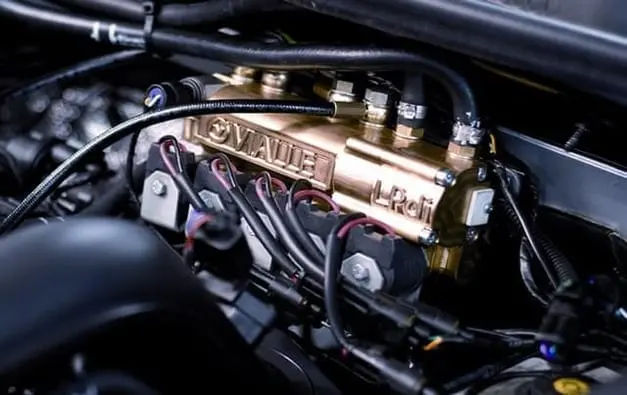
The next generation has globally changed relative to the fourth. Gas enters the nozzles in liquid form, and the system has received its own pump, which pumps constant pressure. Today it is the most advanced system. Main advantages:
- the ability to easily start a cold engine on gas
- lack of gear
- lack of interference in the cooling system
- gas consumption at gasoline level
- plastic pipes of high pressure are used as a highway
- stable engine power.
Of the shortcomings, only the expensive cost of equipment and installation is noted.
6st generation
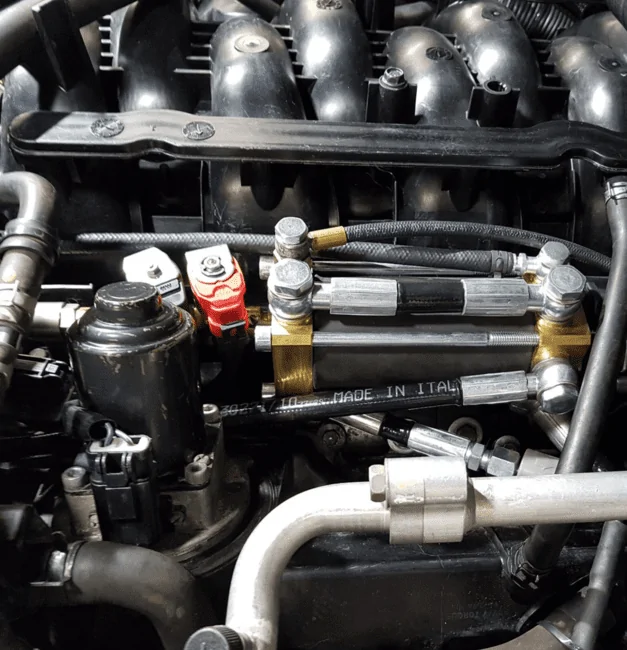
Separately, HBO-6 is difficult to buy, even in Europe. It is installed on cars with direct injection, where gas and gasoline move along the same fuel line, and enter the cylinders through one nozzle. Main advantages:
- minimum additional equipment
- stable and equal power on two types of fuel
- same flow rate
- affordable cost of service
- environmental friendliness.
The cost of a set of turnkey equipment is 1800-2000 euros.
HBO system device
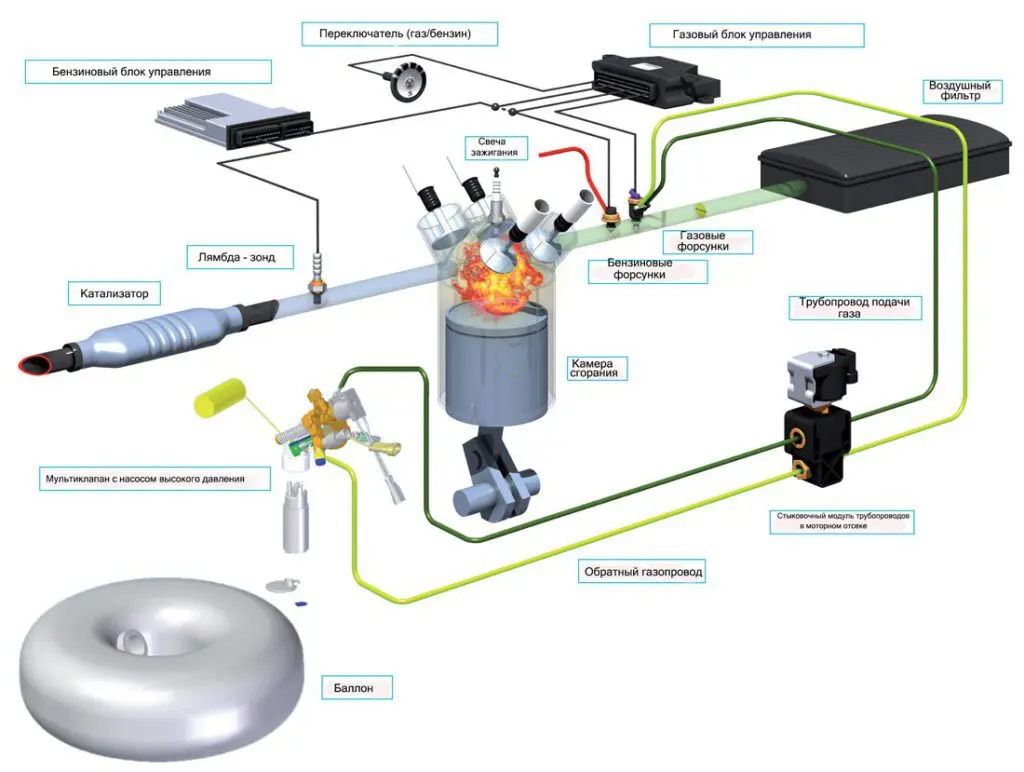
There are several generations of gas equipment. They differ in some elements, but the basic structure remains unchanged. Key components of all LPG systems:
- A socket for connecting a filling nozzle;
- High pressure vessel. Its dimensions depend on the dimensions of the car and the place of installation. It can be a "tablet" instead of a spare wheel or a standard cylinder;
- High pressure line - it connects all elements into one system;
- Toggle button (first and second generation versions) or automatic switch (fourth generation and above). This element switches the solenoid valve, which cuts off one line from another and does not allow their contents to mix in the fuel system;
- The wiring is used to operate the control button (or switch) and the solenoid valve, and in advanced models, electricity is used in different sensors and nozzles;
- In the reducer, the gas is cleaned of impurities through a fine filter;
- The latest LPG modifications have nozzles and a control unit.
Main Components
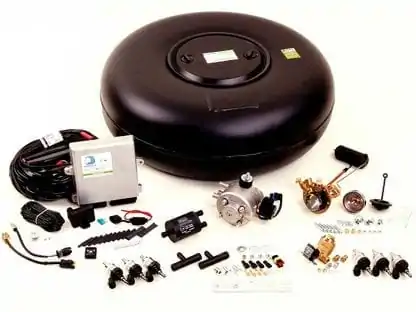
A set of gas equipment consists of the following components:
- evaporator - converts the gas into a vapor state, reduces its pressure to atmospheric level
- reducer - reduces pressure, converts gas from liquid to gaseous due to integration with the cooling system. Operated by vacuum or electromagnet, has screws for adjusting the amount of gas supply
- gas solenoid valve - shuts off the gas supply at the time of operation of the carburetor or injector, as well as when the engine is stopped
- gas solenoid valve – allows you to prevent the supply of gas and gasoline at the same time, the emulator is responsible for this on the injector
- switch - installed in the cabin, has a button for forced switching between fuel, as well as a light indicator of the gas level in the tank
- multivalve - an integral unit installed in the cylinder. Includes fuel supply and flow valve, as well as gas level. In case of excess pressure, the multivalve bleeds the gas into the atmosphere
- balloon - container, cylindrical or toroidal, can be made of ordinary steel, alloyed, aluminum with composite winding or composite materials. As a rule, the tank is filled no more than 80% of its volume in order to be able to expand the gas without a significant increase in pressure.
How does the HBO scheme work?
Gas from the cylinder enters the filter valve, which purifies the fuel from impurities, and also shuts off the gas supply when necessary. An evaporator enters the gas line, where the pressure decreases from 16 to 1 atmosphere. Intensive cooling of the gas causes the gearbox to freeze, so it is heated by the engine coolant. Under the action of rarefaction, through the dispenser, the gas enters the mixer, then into the engine cylinders.
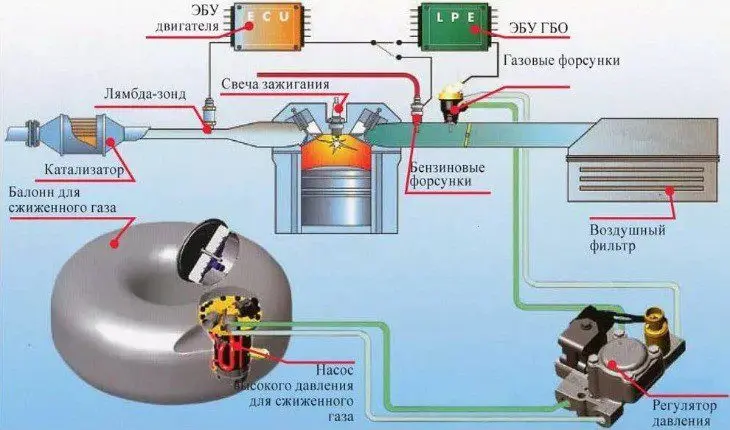
Calculating the payback period for HBO
The installation of HBO will pay off to the car owner at different times. This is influenced by such factors:
- Mode of operation of the car - if the car is used for small trips and rarely goes on the highway, then the motorist will have to wait too long for the installation to pay off due to the lower cost of gas compared to gasoline. The opposite effect is observed for vehicles that travel long distances in the "highway" mode and are less often used in urban environments. In the second case, less gas is consumed on the route, which further increases the savings;
- The cost of installing gas equipment. If the installation is mounted in a garage cooperative, then it is very easy to get to the Krivoruky master, who, for the sake of his savings, puts used equipment at the price of a new one. This is especially scary in the case of cylinders, since they have their own service life. For this reason, there are cases of terrible accidents involving a car in which a balloon burst. But some will knowingly agree to the installation of equipment purchased on hand. In this case, the installation will quickly justify the investment, but then will entail expensive repairs, for example, replacing a multivalve or cylinder;
- Generation HBO. The higher the generation, the more stable and reliable it will work (a maximum of the second generation is put on carburetor machines), but at the same time, the price for installation and maintenance of equipment also rises;
- It is also worth considering what gasoline the engine is running on - this will determine the savings for every 100 km.
Here is a short video on how to quickly calculate how many kilometers a gas installation will pay off due to cheaper fuel:
Advantages and disadvantages
Gas-balloon equipment is the subject of many years of disputes between opponents and adherents of alternative fuels. The main arguments in favor of skeptics:
- the car gets heavier
- trunk space reduction
- service required
- reduced power and higher consumption (for the first 4 generations)
- probability of a gas explosion.
Advantages:
- real savings of up to 40%
- moderate thermal engine operation
- engine oil and coolant are not so polluted
- power reserve increase.
Questions and answers:
What is included in the LPG equipment? Gas cylinder, balloon valve, multivalve, remote filling device, reducer-evaporator (regulates the gas pressure), in which the fuel filter is installed.
What is LPG equipment? This is an alternative fuel system for the vehicle. it is only compatible with gasoline powertrains. Gas is used to operate the power unit.
How does LPG equipment work on a car? From the cylinder, liquefied gas is pumped into the reducer (no fuel pump is required). Gas automatically enters the carburetor or injector, from where it is fed into the cylinders.

